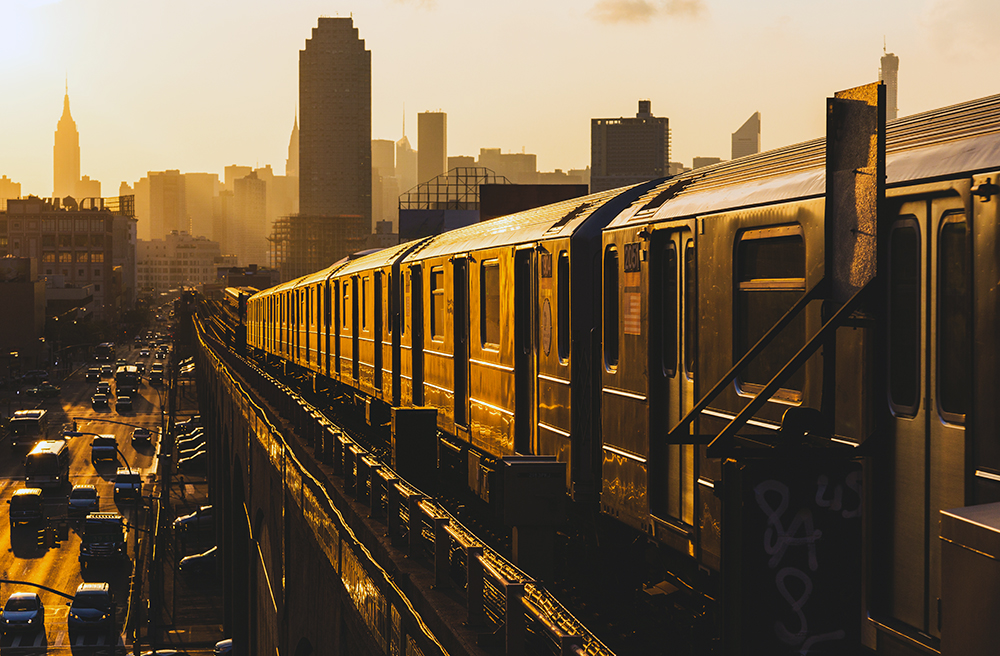New data shows that 61 percent of essential service industry jobs – in food, accommodations, healthcare, retail, building, and personal services– occur mostly outside the typical 9am-5pm workday and are located outside of Manhattan
As subway and bus ridership struggle to climb back to pre-pandemic levels, Comptroller Stringer releases report on ridership variations found by borough, time of day, and transit mode, underscoring the need to better align public transit with today’s economy
Stringer calls for six-minute subway and high-ridership bus service throughout the day to better serve working people; flipping the State gas tax to better fund public transit; 60 miles of dedicated bus lanes and busways; and increased affordable housing production near existing subway stations

New York City Comptroller Scott M. Stringer released new transit data and set of policy recommendations in response to decreased public transit ridership and an emerging need for reforms as the COVID-19 pandemic continues to impact on the city’s workforce and commuting patterns.
Comptroller Stringer’s report, “Beyond Rush Hour: COVID-19 and the Future of Public Transit,”highlights significant variations in subway ridership by borough, by time of day, and by transit mode amid the pandemic. Comptroller Stringer outlines a variety of recommendations to address new and existing changes to the city’s public transit system in a post-COVID landscape: implement six-minute subway and high-ridership bus service throughout the day to better serve the city’s growing legions of shift workers; flip the State gas tax within the 12-county Metropolitan Commuting Transit District so that the lion’s share of funding goes to support public transit, not roads and bridges; open up the vast commuter rail network within the five boroughs; create 60 miles of dedicated bus lanes and busways; increase affordable housing production near existing stations; meet the transit service needs of women, parents, and caregivers; reopen closed subway station entrances; and pass the Commute Trip Reduction law so thatemployers incentivize public transit commuting among the workforce.
Comptroller Stringer’s report reveals transportation discrepancies among blue-collar workers and white-collar workers, with the former using public transportation to travel to in-person jobs more often than the latter:
Comptroller Stringer’s report outlines key data points that support the need to better align public transit with today’s economy. The results of these changes have left the city’s transit system with unresolved challenges—namely declining farebox revenues and service that does not benefit ridership that is disproportionately lower income, living and working outside of Manhattan, likely to work in face-to-face industries, and more dependent on off-peak subway and bus service.
- From 2019 to 2020, farebox revenue dropped by $2.9 billion while traffic congestion swelled up city streets.
- Currently, typical subway ridership is 50 percent below pre-pandemic levels and bus ridership is down 40 percent– but there are variations by borough and time of day and week:
- Subway ridership was down 66 percent and bus ridership down 52 percent in Manhattan from 2019 to 2020; the respective numbers in the Bronx decreased by a modest 53 percent and 37 percent.
- Decreases in subway and bus ridership were noticeably smaller in the early morning, when many essential workers have to get to work. While subway ridership was down 62 percent in 2020 and bus ridership down 44 percent, in the early morning hours (5 a.m. to 7 a.m.), subway ridership fell by a more modest 48 percent and bus ridership by only 32%.
- Meanwhile, weekend ridership has recovered at a faster rate than weekday ridership. As of September 2021, weekend subway ridership reached 65 percent of pre-pandemic levels, while weekday ridership hovered at an anemic 51 percent.
To better serve transit riders throughout the five boroughs, Comptroller Stringer’s report outlines the following policy recommendations:
As it stands, federal transit agencies are largely restricted to capital funding and grants cannot be used towards more frequent and reliable transit service. These restrictions have always been misguided and, given the lasting impact of the pandemic on remote work and ridership, have become particularly egregious. The funding allotted through the Stronger Communities through Better Transit Act would provide approximately $3 billion to the MTA each year and cover anticipated farebox losses in the coming years.
Second, extending the subway down Utica Avenue in Brooklyn and rebuilding the Nostrand Junction should also be a longer-term priorities to improve connectivity for working New Yorkers and communities of color outside of Manhattan.
To read Comptroller Stringer’s latest transit policy report,“Beyond Rush Hour: Covid-19 and the Future of Public Transit,” click here.
No comments:
Post a Comment